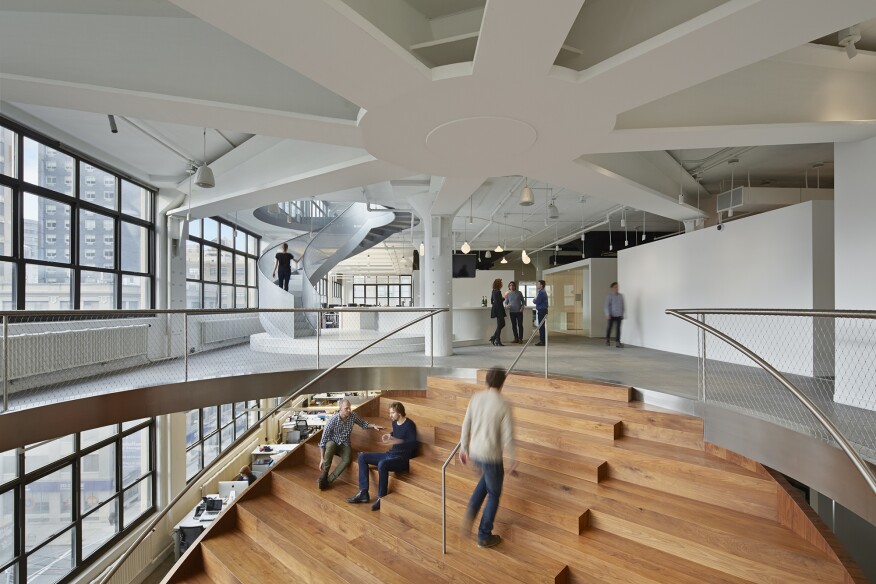
A recent report from the nonprofit Trust for America’s Health (TFAH) included the alarming news that nearly 40 percent of American adults are obese. The finding is based on data from the National Health and Nutrition Examination Survey, which also calculated an obesity rate of 18.5 percent among children. Meanwhile, a report by the Institute for Health Metrics and Evaluation indicated that approximately two-thirds of U.S. adults and 30 percent of children are either overweight or obese. Furthermore, accompanying health conditions such as diabetes and hypertension are also on the rise.
According to the TFAH report, the “underlying causes of obesity are complex and interconnected, ranging from economic and policy dynamics to environmental influences, social norms, and individual and family factors.” But, the research also found "a link between built environments—all the human-made physical aspects of a community—and both physical activity and obesity.”
Although much emphasis has been placed on enhancements to outdoor spaces such as bike infrastructure and accessible sidewalks, far less has been done related to buildings. Yes, many feature gymnasiums, playgrounds, fitness centers, and other such environments to elevate human health and well-being. Yet the provision of such spaces is no longer adequate to address our burgeoning national epidemic of obesity and other inactivity-related conditions. Given that we spend roughly 90 percent of our time indoors, the design of interior environments can and should encourage more physical activity.
To address this, some communities are introducing guidelines to manipulate the convenience spectrum of interior mobility. For example, New York City’s Active Design Guidelines: Promoting Physical Activity and Health in Design, published in 2010, advocates the prominent placement of well-designed stairs, ramps, and other circulatory elements while downplaying the presence of elevators and escalators. Because convenience relates to inherent effort, this shift in emphasis increases the perceived ease of walking versus inconspicuous, mechanized means of transportation.

The WELL Building Standard promotes a similar strategy in its interior fitness circulation feature, which supports the design of highly visible and centrally located common stairs with aesthetically appealing elements (such as daylighting or artwork) in indoor environments of two to four stories. This strategy can be expanded to incorporate other functional elements for additional benefits. For example, WorkAC’s design for advertising agency Wieden+Kennedy’s New York office features visually prominent communicating stairs with multifunctional uses. A “stairena,” or circular-plan stair with integral bleacher seating, connects the sixth and seventh floors. Another stair links a bar on the seventh floor to an eighth-floor library with an elegant spiral of perforated metal. Navigating such strategic circulatory features is not only convenient but unavoidable.
If elevating the convenience of walking is a typical approach for encouraging physical fitness, another tactic is to make movement more difficult. The seemingly counterintuitive strategy appears in the works of late artists and designers Arakawa and Madeline Gins who established the Reversible Destiny Foundation in New York. Intended to combat the adverse effects of aging, Arakawa and Gins’ Bioscleave House in East Hampton, N.Y.—also called the Lifespan Extending Villa—features a large central room with an undulating floor into which the kitchen and dining areas are recessed. The bumpy, steeply sloped surface links these communal spaces with bedrooms, bathrooms, and a study, requiring occupants to navigate the daunting terrain to complete daily activities. According to the Reversible Destiny Foundation website, this intensified anatomical challenge is intended to “allow the body to constantly reconfigure itself and with time become a means to strengthen the immune system.”
This vitality-enhancing approach is also apparent in public installations by art collective Numen/For Use. These temporary constructions—such as Tube Cologne, a sequence of cocoon-like net structures made of rope—require challenging, total-body effort to navigate. In another example, the collective’s Tube Innsbruck connects multiple interior floors with a bifurcating, intestinal passageway that effectively takes the place of a communicating stair. Another material trajectory appears in a project like Tape Des Moines, a suspended network of branching hollow tubes composed—somewhat miraculously—of adhesive tape.
Argentinian Berlin-based artist Tomás Saraceno has also constructed installations that transform public spaces into immersive territories for physical exertion such as In Orbit, a multilayer net structure suspended some 65 feet above the floor in the K21 Staendehaus Museum in Düsseldorf, Germany. Like Numen/For Use’s projects, In Orbit not only presents a challenging climb but also continually moves based on the forces exerted by other climbers, thus challenging one’s balance.
These strategies may appear to be quite different, but they all share the same capacity to encourage physical activity via non-automated mobility systems with alluring designs. Clearly, many of these projects would not meet the accessibility standards of the Americans with Disabilities Act (ADA), but movement-inspiring approaches are possible in ADA-compliant designs, such as ramps and other sloping surfaces.
According to a 2016 survey conducted by Reebok, the average person “will spend less than one percent of their entire life exercising,” equivalent to 180 days within an average life span of 25,915 days. It is therefore imperative that architects find ways to include exercise as part of one’s everyday experience, within public as well as private buildings. After all, fitness should not be an exceptional activity—but a common one made irresistible by design.
















